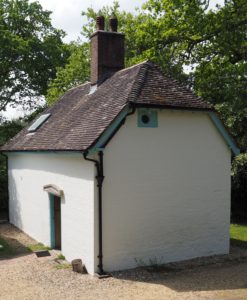Out of the fog of childhood memories, there are sometimes events so sharp and clear that they seem they could have happened yesterday. These jewel-like memories often mark a decisive shift in perspective or fortune, a turning point perhaps not realized at the time but in hindsight a significant moment in one’s development.
For me, I remember one particular event with startling clarity. I was 10 years old, in fact, it was my 10th birthday treat. It was January 1963 and England was gripped by the hardest winter in 200 years. I remember arriving with my parents at the ABC cinema in Southend-on-Sea on a bitterly cold night, snow and ice crunching underfoot. Settling down in my seat, the warmth of the centrally heated theatre was almost overpowering after the bitter cold outside.
The film I was about to see would explode the world view of this slightly shy, child product of the grey austerity of 1950’s England. It opened up a window into another world of colour and heat and excitement and adventure, a world so remote from my 1950’s upbringing that it seemed as though from another planet. The film was Lawrence of Arabia, the film that would wave goodbye to the drab ‘50’s and herald the vibrancy and excitement of the 1960’s. It took my breath away, the huge cinemascope projection, the richness of the technicolour print and the vast panorama in which David Lean, the director, painted his story and, of course, Peter O’Toole in the performance of his life as the strange, ascetic, troubled and disturbing T.E.Lawrence. That frigid night on the Thames Estuary was left behind as I travelled those desert landscapes, living the heat and sand and danger and excitement along with Lawrence himself. It was the single most exciting theatrical experience of my life. For the first time, I appreciated that there was a world beyond my experience, a world waiting to be explored.
Many years later, I camped overnight in Wadi Rum (Jordan) where David Lean shot many of the most iconic scenes of the film, but it was not until recently that I managed to visit Clouds Hill in Dorset, the tiny cottage that Lawrence lived in for the last years of his short life. Suffering fatigue and mental exhaustion, Lawrence had enlisted in the Tank Corps, based at nearby Bovington Camp, in 1923. Unable to write at the camp, he had rented Clouds Hill, then a dilapidated labourer’s cottage, as a work space for his writing. The cottage is tiny, one room up and one down and two tiny rooms off the stairs. Lawrence eventually bought the cottage and made it his own with plain panelling and exposed timbers. Its’ simple, Arts and Crafts inspired interior perfectly reflects the solitary, ascetic nature of its owner.

He filled it with his books and music, mementos of his exploits and gifts from admirers. One such was a portrait given to Lawrence by Henry Scott Tuke, the famous Cornish-based artist, of a cadet bathing by the sea. It is reputed to be a portrait of Lawrence and there is a definite likeness, but it seems more likely that Tuke overpainted Lawrence’s features onto an earlier portrait. Such was Lawrence’s fame, as well as his stature as a mature and successful writer, that Clouds Hill received a procession of distinguished visitors. Augustus John, E.M.Forster, Bernard and Charlotte Shaw, the painter Gilbert Spencer, Thomas Hardy and the poet Robert Graves among others all sat within these spartan surroundings.
Lawrence’s 12 year term of enlistment in the Forces was to end in 1935 and he intended to live at Clouds Hill and concentrate on his writing career. However, on 13 May 1935 returning from the post office at Bovington on his much-loved motorcycle, he was involved in an accident when he appeared to swerve to avoid two boys on bicycles. He never regained consciousness and died six days later. Like much surrounding Lawrence, the details of the accident were subject to controversy. Conspiracy theories abound as to how and why the accident may have taken place – reports of a black car leaving the scene and confused and conflicting testimony from the boys only fueled speculation. However, an exhaustive police investigation, including the fledgling security service MI5, came to the conclusion that it was a simple accident with no more sinister overtones. The scene of the accident is just a few hundred yards from Clouds Hill and is marked by a plain memorial. Lawrence was buried with simple ceremony in the parish church of nearby Moreton village. Though simple, the ceremony was attended by huge numbers including Winston Churchill and other dignitaries. The only other memorial to this most enigmatic of men is in the crypt of St Paul’s Cathedral in London.
Clouds Hill is owned and maintained by the National Trust